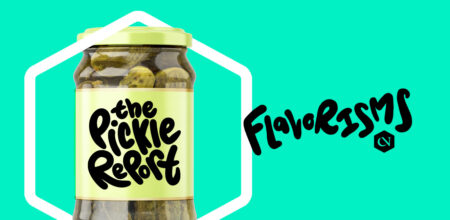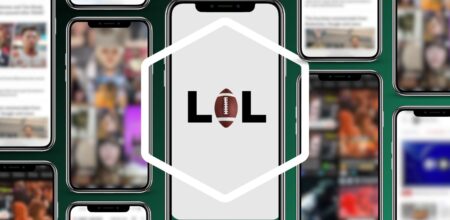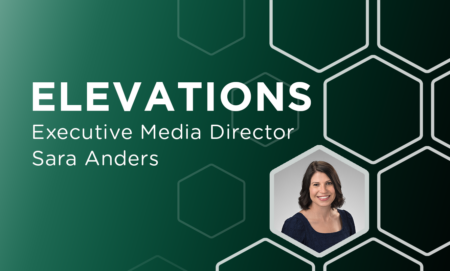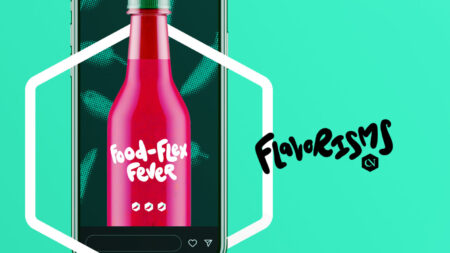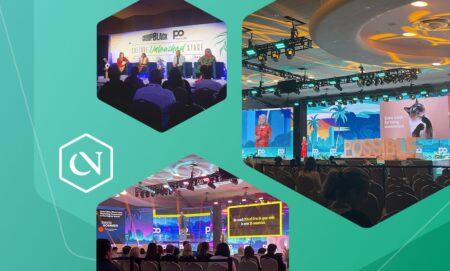Today’s students don’t just want to know what an institution offers. They want to understand why it matters to them personally. And that shift—from broad-based messaging to deeply personal engagement—is redefining how higher education institutions must communicate.
THE RISE OF PERSONALIZATION: NO MORE ONE-SIZE-FITS-ALL
Personalization in higher ed has long been more aspiration than reality, but that’s changing as digital-native students grow to expect hyper-personalized experiences like those from Netflix and Amazon, where recommendations feel intuitive. When engaging with an institution, they expect the same level of relevance—messaging, content, and outreach tailored to their interests, not just generic recruitment materials.
The ability to use behavioral data to customize everything from email content to website experiences is quickly becoming a competitive advantage. Done well, it builds an immediate sense of belonging—long before a student steps on campus.
AI IS RESHAPING ENGAGEMENT, BUT THE HUMAN ELEMENT STILL WINS
AI is streamlining higher ed marketing—from chatbots improving response times to predictive analytics optimizing outreach. But the real power of AI lies in enhancing, not replacing, human interaction.
Yes, machine learning can surface engagement patterns. But students still crave authentic, human interactions. Institutions that use AI to make human connections more meaningful will have the advantage.
SOCIAL MEDIA AS THE FIRST POINT OF CONTACT
For many students, social media is the first interaction they have with an institution. It’s where they get an unfiltered look at campus life and decide if they can picture themselves there.
But expectations are shifting. Highly polished campaigns are giving way to content that feels real: student takeovers, behind-the-scenes clips, unscripted moments. Social media isn’t just a visibility tool—it’s a space for real-time engagement and trust-building.
OUTCOMES MATTER MORE THAN EVER
The conversation around higher education is increasingly focused on one thing: outcomes. Students and families want to know what tangible benefits an education will provide, from career pathways to real-world opportunities.
That means marketing can no longer rely solely on institutional prestige or program descriptions—it has to prove impact. Alumni success stories, industry partnerships, and clear career pipelines are becoming critical storytelling tools, shifting the focus from what we offer to how we change lives.
Institutions that focus on real-world impact—and back it up with data and transparency—will resonate most.
THE EVOLUTION OF CAMPUS VISITS: DIGITAL AND IMMERSIVE EXPERIENCES
The traditional campus tour isn’t going away, but digital-first experiences are becoming an essential complement. Students are now exploring institutions through virtual reality, interactive program showcases, and AI-driven campus guides—often before even considering visiting in person.
These tools don’t replace physical experiences, but they do remove barriers. They offer accessibility to students who may not be able to travel, and they create an on-demand engagement model where exploration can happen anytime, anywhere.
For marketing, this shift means a greater emphasis on experience design, ensuring that virtual and in-person interactions feel cohesive, compelling, and aligned with the expectations of a digitally savvy audience.
PEER INFLUENCE GUIDES DECISION-MAKING
Trust in traditional marketing has been declining for years, and today’s students are more likely to rely on peer recommendations and real-life testimonials than institutional messaging. That’s why influencer marketing—particularly in the form of student ambassadors, alumni networks, and faculty thought leaders—is becoming a more powerful force.
It’s not about hiring celebrities; it’s about leveraging the voices that students already trust. A social post from a student sharing their experience can be more persuasive than any official campaign. A first-hand account from an alum in a relevant field can hold more weight than a ranking statistic.
The institutions that invest in building and amplifying these voices will create a deeper sense of trust and credibility, making their brand more approachable.
THE CHANGING NATURE OF SEARCH: SEO MUST ADAPT
Traditional SEO strategies are facing disruption as search engines integrate AI-driven responses and conversational queries. Students aren’t just searching “best colleges for business” anymore; they’re asking full, specific questions, and AI tools like ChatGPT Search and Perplexity AI are providing direct answers without requiring a click to a website.
This shift means marketing strategies must evolve. Creating content that answers real questions in a natural, conversational format is essential. Institutions that adapt their SEO strategies to align with AI-powered search behaviors will remain visible and relevant in an increasingly competitive landscape.
AN OMNICHANNEL APPROACH IS NOW ESSENTIAL
Students engage with institutions across multiple platforms before ever making a decision. They might see an Instagram post, sign up for an email newsletter, explore a virtual tour, or chat with an admissions counselor. If those touchpoints feel disconnected, the entire experience weakens.
An omnichannel approach—in which branding, messaging, and engagement strategies are seamlessly integrated across every platform—ensures that every interaction reinforces trust and clarity. Institutions that create a frictionless experience across web, social, email, and in-person engagement will not only attract more students but will guide them through the decision-making process with confidence.
THE FUTURE OF HIGHER ED MARKETING: LESS PROMOTION, MORE CONNECTION
The institutions that thrive in 2025 and beyond won’t be the ones shouting the loudest. They’ll be the ones listening the most, adapting the fastest, and creating the most genuine, human connections in a digital-first world.
The goal isn’t just to increase applications or boost brand awareness. It’s to help students find the right path, show them where they belong, and give them confidence in their decisions.
Because higher education marketing isn’t just about enrollment. It’s about the futures we help shape.
Want to learn how we can help your brand? Drop us a line below and let’s connect.

